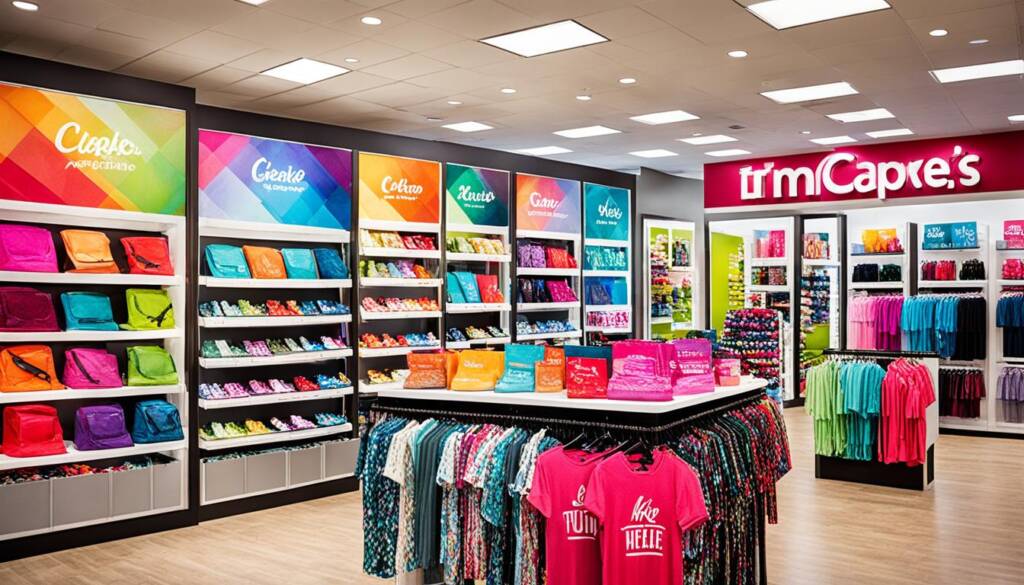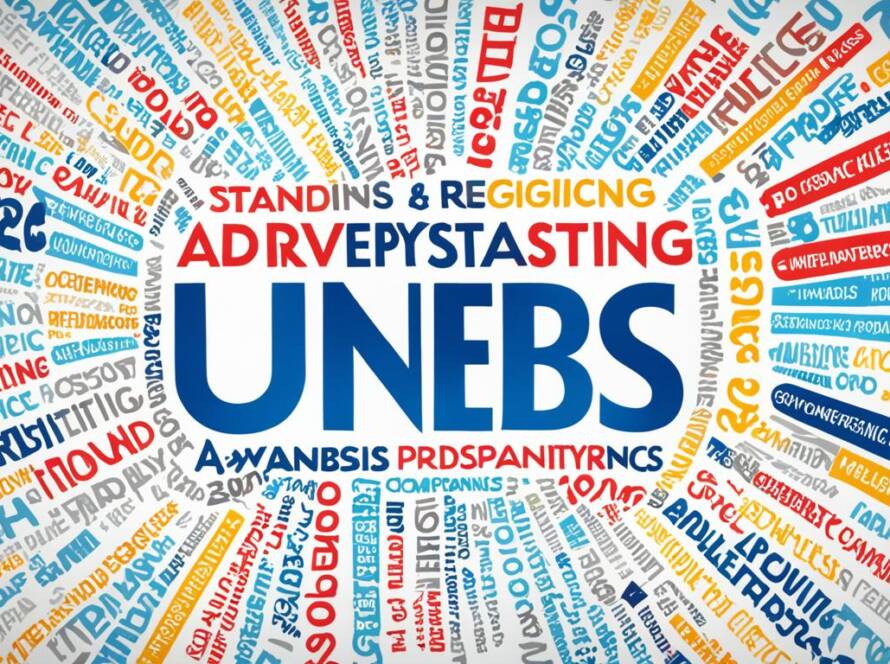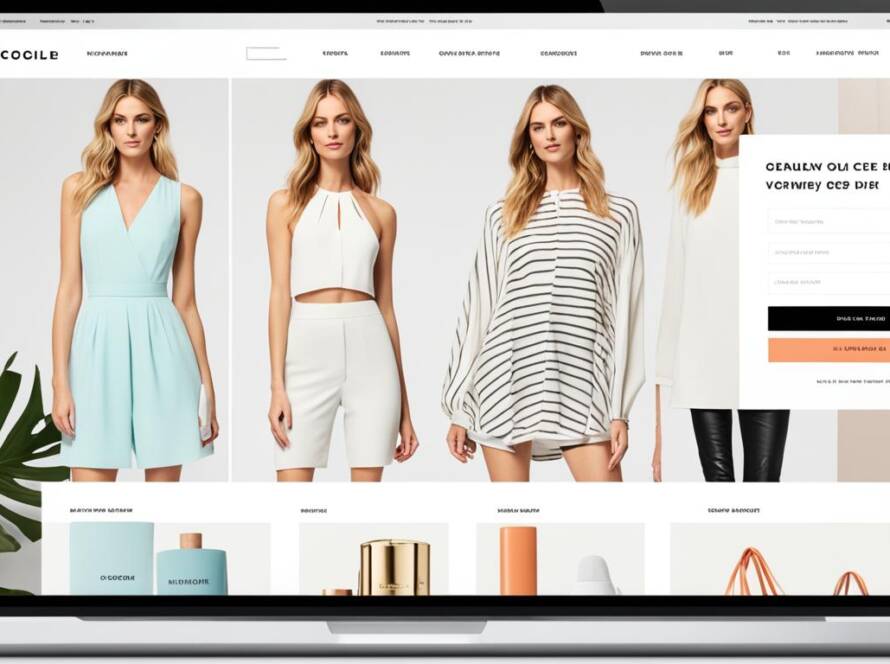In the busy world of retail, starting a store is just the beginning. It’s where examples of retail marketing strategies come into play, boosting sales and grabbing customer attention. A store needs passion and hard work to get off the ground. This includes picking products, finding a location, and building a team. But what really keeps a store going is strong retail marketing. It draws in customers at first and helps keep them coming back, helping avoid the common mistakes that 20% of new businesses make. Successful examples of retail marketing strategies, such as loyalty programs, targeted promotions, and in-store events, are key to maintaining customer engagement and driving long-term success.1

Retail marketing goes beyond just ads. It’s about making the store welcoming, engaging on social media, and building good relationships with customers. These efforts help not just with the first sales but also in building a loyal customer base. This loyalty can lead to a big jump in profits, up to 95%, by keeping customers coming back1. For instance, Pro Support Accessories saw a huge increase in sales thanks to its loyalty programme, boosting sales by 80%1.
Key Takeaways
- 20% of small businesses fail within their first year1.
- Implementing effective retail marketing is crucial for fostering initial and long-term success.
- Retail marketing strategies extend beyond traditional advertising methods to include in-store atmosphere and digital engagement.
- Customer retention can lead to a potential 95% increase in profits1.
- Pro Support Accessories experienced a surge in sales by 80% through customer loyalty programmes1.
Importance of Retail Marketing
Retail marketing is more than just showing off products. It’s key to making customers feel sure about their purchases and reducing the 77% of buyer’s remorse. Good retail marketing helps keep customers coming back and boosts profits. It’s crucial for drawing in new customers and guiding them through their shopping journey on social media and SEO2. This strategy turns retail marketing into a powerful way to make money.
Building Customer Loyalty
Keeping customers engaged is vital for lasting relationships. Programs like those from Pro Support Accessories show how strategic marketing boosts customer loyalty2. Digital marketing tools like email and social media help create personal experiences. This strengthens customer loyalty23.
Increasing Revenue
Good retail marketing strategies help increase sales by making brands more known and drawing in new customers23. Using both old and new marketing methods can expand our reach and impact3. Research helps us understand what customers want, so we can offer exactly what they’re looking for2.
Strengthening Branding
A strong brand is key to retail success, with a 33% revenue boost from a consistent brand image. Branding strategies, like product selection and in-store experiences, play a big part. Good marketing ensures our brand connects with customers2. Being active on social media helps us reach more people and bring in more customers3.
Planning our stores and how we display products makes our marketing more effective3. Offering the right products and services meets customer needs. This leads to successful campaigns that build loyalty and positive relationships with customers3.
In-Store Marketing Techniques
In-store marketing is key to making shopping fun and engaging. It encourages customers to spend more and stay longer. Using eye-catching displays and offering samples or live demos is a great way to grab attention and boost sales.
These methods can be part of a wider marketing plan. This includes old-school flyers and new digital tools like Instagram and TikTok. These platforms help retailers connect with customers every day.
In-store marketing helps brands grow. For example, Frito-Lay leads the potato chips market with over 60% share, thanks to smart marketing4. It can draw in new customers and switch them from competitors4.
Using data analytics in marketing can make shopping better. It helps suggest products based on what customers like. Millennials and Gen Z like digital shopping but can be brought to stores with the right marketing5.
Augmented reality (AR) can change how customers see products in stores5. AR, interactive displays, and personal recommendations make a big impact. Prices can change to match what customers want in real-time.
Geofencing and indoor maps make marketing easier and help customers find what they need5. Personalised messages can bring more people into the store, increase sales, and make customers more loyal5. By using these strategies, retailers can make shopping exciting and effective.
Retail Marketing Strategies
Effective retail marketing uses a mix of creative and strategic methods to draw in customers and make a strong brand presence. Here are key strategies to achieve this:
Curb Appeal
First impressions matter a lot, especially in retail. Attractive signs and window displays can really catch a customer’s eye. About 80% of shoppers are more likely to visit a store that looks inviting6. Rose City Goods uses this well, pulling in people as they walk by.
Organising Retail Displays
Clad and Cloth focus on making their displays both neat and appealing. Using QR codes in their displays helps them connect with customers, getting around 600,000 clicks a day6.
Building an Online Presence
Being strong online is crucial today, especially with social media’s popularity. Brands can reach lots of people through platforms like Instagram, where looks and stories meet. Over half of shoppers check out stores online before visiting7. Social media stars help spread the word, reaching millions7. Online shopping is a big part of how people buy things7.
Investing in Local SEO
Local SEO helps retailers show up in searches for their area. People often look up stores online for details like phone numbers and directions7.
Running Local Ads
Local ads help retailers reach more people. Over half of shoppers check prices and read reviews online while shopping7. This can turn browsers into buyers.
Working with Influencers
Influencer marketing is a big deal, worth $16.4 billion in 20226. Working with influencers on social media can boost brand loyalty, conversion, and engagement7.
These strategies make shopping better for customers, helping stores grow and make more money.
Conclusion
Effective retail marketing uses many techniques to make brands stand out and engage customers. It includes everything from making stores look appealing to having a strong online presence. These efforts are key to telling a brand’s successful story.
Personalised marketing has a big impact, with a 26X higher conversion rate for retail clients compared to generic emails. This approach also leads to a 20% increase in sales8.
Brands like Koio and Rapha show how personalisation and unique experiences work well. Koio saw over 10% more in-store sales in one weekend thanks to personalised messages. Rapha turned its stores into community hubs, boosting customer loyalty8. Glossier’s online community highlights the value of staying active online8.
COVID-19 has changed retail, pushing stores to focus on online shopping and personal experiences. Using tech like augmented reality and chatbots can improve customer service and make things easier for stores9. It’s also vital to keep customers safe with contactless payments and curbside pickup9. Adopting these strategies helps stores not just survive but thrive in a changing market.
Source Links
- https://www.shopify.com/uk/retail/retail-marketing
- https://www.beyondretailindustry.com/retail-strategy/why-is-marketing-strategy-important-in-retail/
- https://www.notifyvisitors.com/blog/retail-marketing/
- https://www.tokinomo.com/in-store-marketing
- https://mapsted.com/blog/in-store-marketing
- https://bitly.com/blog/retail-marketing/
- https://www.business.com/articles/market-your-retail-store/
- https://endearhq.com/blog/retail-marketing
- https://www.linkedin.com/pulse/retail-marketing-strategy-rana-wajid-1f


